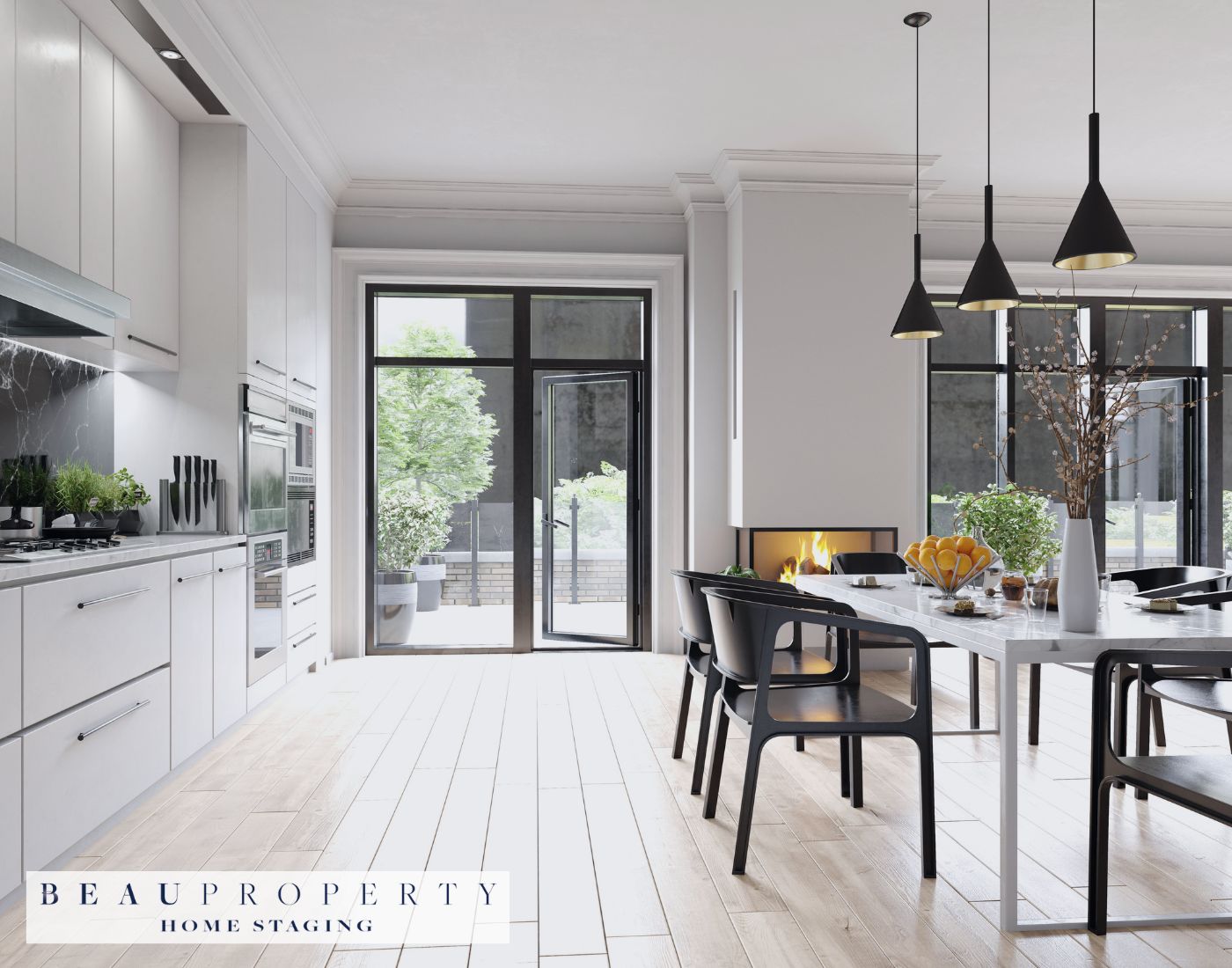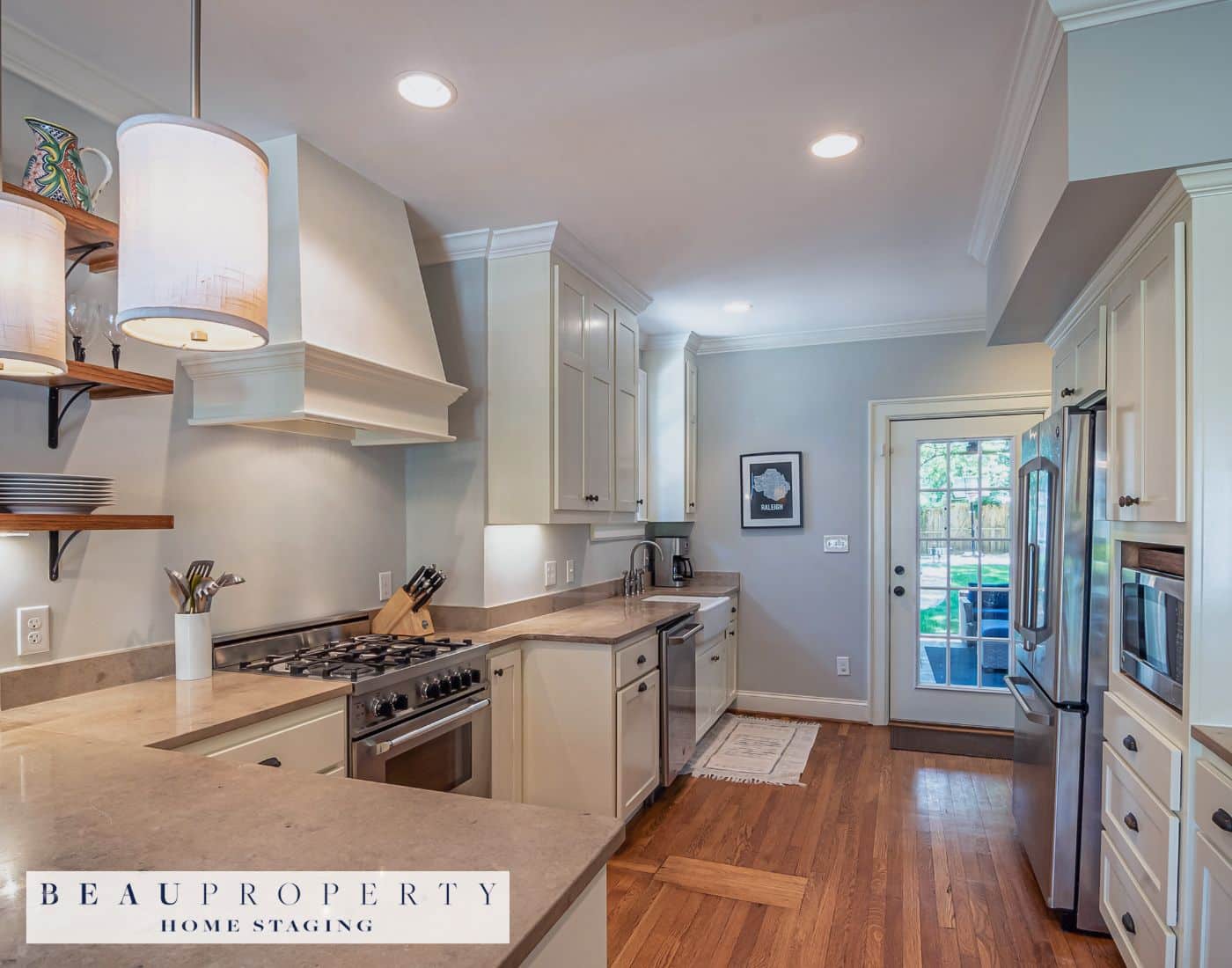Introduction to Home Staging
Home staging is a crucial aspect of preparing a property for sale or rent. It involves carefully arranging furniture, decor, and other elements to showcase the property’s best features and create an inviting atmosphere that appeals to potential buyers or tenants. By highlighting the unique selling points of a home, staging can make a significant impact on how quickly and profitably a property sells or rents.
The goal of home staging is to help potential buyers or renters envision themselves living in the space. A well-staged home can evoke positive emotions and create a lasting impression, making it more likely for viewers to develop a strong connection with the property. This emotional response can be the deciding factor in whether a buyer makes an offer or a renter chooses to sign a lease.
Home staging is not limited to any specific type of property or seller. It can be beneficial for property developers, estate agents, homeowners, and landlords alike. Whether you are staging a small apartment or a luxurious mansion, the principles remain the same: create a welcoming atmosphere that showcases the property’s potential and appeals to the target audience.
The Foundation: Decluttering and Deep Cleaning
When it comes to creating a welcoming atmosphere in your home, the importance of decluttering and deep cleaning cannot be overstated. These essential steps lay the foundation for effective home staging, transforming your space into an inviting haven that potential buyers or tenants will find irresistible.
Decluttering is the process of removing unnecessary items, organising your belongings, and creating a clean, clutter-free environment. By eliminating excess stuff, you allow the true beauty and potential of your home to shine through. Clutter can make a space feel cramped, overwhelming, and uninviting, whereas a decluttered home feels spacious, organised, and welcoming.
The benefits of decluttering extend beyond aesthetics. A clutter-free home can reduce stress, improve focus, and create a sense of calm and tranquillity. When potential buyers or tenants walk into a decluttered space, they can easily envision themselves living there, as the absence of personal items allows them to mentally move in and make the space their own.
Deep Cleaning
In addition to decluttering, deep cleaning is a crucial aspect of preparing your home for staging. A thoroughly cleaned property communicates care, attention to detail, and a well-maintained living space. Deep cleaning goes beyond the surface, addressing often-neglected areas such as baseboards, window sills, light fixtures, and grout lines.
A sparkling clean home not only looks appealing but also feels fresh and inviting. It sends a message to potential buyers or tenants that the property has been well cared for, instilling confidence in the overall condition of the home. Deep cleaning can also help eliminate odours, improve air quality, and create a healthier living environment.
To effectively declutter and deep clean your home, consider the following tips:
- Start with one room at a time to avoid feeling overwhelmed
- Sort items into categories: keep, donate, sell, or discard
- Use storage solutions to keep belongings organised and out of sight
- Pay attention to often-overlooked areas during deep cleaning
- Hire professional cleaners for a thorough, efficient deep clean
Boosting Curb Appeal
When it comes to creating a welcoming atmosphere for your home, boosting curb appeal is an essential aspect that shouldn’t be overlooked. The exterior of your property is the first thing visitors see, and it sets the tone for their overall impression of your home. By implementing strategic landscaping techniques and adding thoughtful exterior decor, you can transform your home’s exterior into an inviting and visually appealing space.
The Power of a Well-Maintained Lawn
A lush, green lawn is the foundation of excellent curb appeal. Regular lawn maintenance, such as mowing, edging, and watering, can make a significant difference in the overall appearance of your property. A well-manicured lawn not only looks attractive but also conveys a sense of pride and attention to detail. Consider incorporating eco-friendly lawn care practices to promote a healthy and sustainable landscape while minimising environmental impact.
Enhancing with Exterior Decor
Exterior decor elements can add personality and charm to your home’s exterior. Incorporate weather-resistant artwork, such as birdbaths, metal cutouts, sculptures, or wind chimes, to create visual interest and complement your home’s natural palette. These decorative touches can make your property stand out and leave a lasting impression on visitors. Remember to choose pieces that align with your home’s overall style and aesthetic for a cohesive look.
The Impact of a Positive First Impression
Creating a positive first impression is crucial when it comes to making your home feel welcoming. A well-maintained exterior communicates a sense of pride, professionalism, and attention to detail. It sets the stage for visitors’ overall perception of your property and can greatly influence their experience. By investing time and effort into boosting your home’s curb appeal, you demonstrate your commitment to creating a pleasant and inviting environment for both residents and guests alike.
Crafting Inviting Interior Spaces
When it comes to creating a welcoming atmosphere in your home, the way you arrange your furniture and utilise lighting can make all the difference. Strategic furniture placement not only optimises the flow and functionality of a space but also enhances its overall aesthetic appeal. By carefully considering the layout of each room, you can craft inviting interior spaces that make both residents and guests feel right at home.
The Art of Furniture Arrangement
One of the key aspects of designing an inviting interior is mastering the art of furniture arrangement. The placement of sofas, chairs, tables, and other elements can greatly impact the flow and feel of a room. As interior designer Jane Smith suggests, “Start by identifying the focal point of the space, such as a fireplace or a stunning view, and arrange your furniture around it to create a natural conversation area.”
When arranging furniture, it’s essential to consider the scale of each piece in relation to the room’s dimensions. Oversized furniture can make a small space feel cramped, while undersized pieces can leave a large room feeling sparse and uninviting. Aim for a balanced mix of sizes and shapes to create a harmonious and comfortable environment.
In addition to size, the placement of furniture can also affect the perceived spaciousness of a room. “Float” furniture away from the walls to create a sense of depth and openness, and use area rugs to define distinct seating or dining zones within an open-concept space.
The Power of Lighting
Lighting plays a crucial role in setting the mood and atmosphere of an interior space. While natural light is always preferable, the strategic use of artificial lighting can transform a room from cold and uninviting to warm and cosy. As lighting designer Mark Johnson notes, “Layering different types of lighting, such as ambient, task, and accent lighting, can create a rich and inviting ambiance.”
Ambient lighting, such as overhead fixtures or wall sconces, provides overall illumination and sets the tone for the space. Task lighting, like table lamps or pendant lights, offers focused illumination for specific activities such as reading or cooking. Accent lighting, including picture lights or recessed spotlights, highlights artwork, architectural features, or other focal points, adding depth and interest to the room.
When selecting light fixtures and bulbs, opt for warm, soft lighting rather than harsh, cool tones. Dimmable fixtures allow you to adjust the brightness to suit different moods and activities, creating a more versatile and inviting atmosphere. Candles and string lights can also add a touch of warmth and charm to any space.
Personalising with Thoughtful Accents
When it comes to creating a warm and inviting atmosphere in a staged home, it’s the little things that make a big difference. By incorporating personal touches like throws, cushions, and fresh flowers, you can transform a space from bland to beautiful in no time.
Soft textiles like plush throws and velvet cushions are a simple yet effective way to add a cosy feel to any room. Draping a sumptuous throw over the back of a sofa or arranging a few colourful cushions on a bed can instantly make a space feel more welcoming. These small accents not only add visual interest but also invite potential buyers to imagine themselves curling up with a good book or enjoying a lazy Sunday morning in their new home.
Flowers
In addition to textiles, fresh flowers are another must-have accessory for any staged property. A vase of vibrant blooms can breathe life into a room, adding a pop of colour and a touch of nature. According to a study by the University of North Florida, the presence of flowers in a home can actually increase feelings of happiness and well-being. So, not only do they look beautiful, but they can also have a positive impact on potential buyers’ emotions.
When selecting flowers for staging, it’s important to choose varieties that are long-lasting and low-maintenance. Chrysanthemums, for example, are a popular choice because they come in a wide range of colours and have a long vase life. Eucalyptus is another great option, as it adds a fresh, natural scent to a room and can last for several weeks.
Of course, it’s not just about the accessories themselves, but also how they are arranged. When placing throws and cushions, aim for a casual, effortless look rather than a perfectly symmetrical arrangement. This will make the space feel more lived-in and authentic. Similarly, when arranging flowers, opt for a loosely gathered bouquet rather than a tightly structured arrangement. This will create a more relaxed, organic feel that potential buyers can easily envision themselves living with.
Harnessing Colour Psychology
Colour psychology is a fascinating field that explores how different hues can influence our moods, emotions, and even our perceptions. When it comes to staging a property, understanding the psychological effects of colour can be a powerful tool in creating an inviting and attractive atmosphere.
Studies have shown that certain colours can evoke specific emotional responses. For example, warm colours like red, orange, and yellow are often associated with feelings of excitement, energy, and happiness. These vibrant hues can stimulate the senses and create a lively, welcoming ambiance in a space. On the other hand, cool colours such as blue, green, and purple tend to have a calming and soothing effect, promoting feelings of relaxation and tranquillity.
Creating a Welcoming Atmosphere with Color
When staging a property, it’s essential to consider the psychological impact of the colours you choose. By strategically incorporating colours that evoke positive emotions, you can create a warm and inviting atmosphere that appeals to potential buyers or tenants. Here are some tips for using colour psychology to enhance the attractiveness of a staged property:
- Use warm, neutral colours like beige, taupe, and light grey as a base to create a sense of comfort and sophistication.
- Add pops of vibrant colours through accessories, artwork, or accent walls to infuse energy and personality into the space.
- Incorporate shades of blue and green in bedrooms and bathrooms to promote a calming and restful environment.
- Opt for soft, muted tones in living areas to create a cosy and inviting ambiance that encourages relaxation and conversation.
The Power of Color in Different Spaces
Different rooms in a property can benefit from specific colour schemes based on their intended purpose. For example, in a home office or study, shades of blue and green can enhance focus and productivity. These colours are known to have a calming effect on the mind, reducing stress and promoting mental clarity.
In the kitchen, warm colours like red and orange can stimulate appetite and create a lively, energetic atmosphere. These bold hues can also make a small kitchen feel more spacious and inviting. However, it’s important to use these colours in moderation to avoid overwhelming the space.
When it comes to bedrooms, soft, muted colours are often the best choice for creating a peaceful and restful environment. Shades of lavender, pale blue, and light pink can promote relaxation and help individuals unwind after a long day. These soothing colours can also make a small bedroom feel more spacious and airy.
The Role of Lighting in Colour Perception
It’s important to note that lighting plays a crucial role in how colours are perceived in a space. Different types of lighting can significantly impact the way colours appear, so it’s essential to consider both natural and artificial lighting when selecting a colour scheme.
Natural light can enhance the vibrancy and depth of colours, making them appear more vivid and true to life. On the other hand, artificial lighting can alter the appearance of colours, making them appear warmer or cooler depending on the type of bulb used. When staging a property, it’s important to ensure that the lighting complements the chosen colour scheme to create a cohesive and inviting atmosphere.
Conclusion
Creating a welcoming atmosphere through effective staging is a crucial aspect of successfully selling or renting a property. By implementing the strategies discussed throughout this blog post, property owners can significantly enhance the appeal and marketability of their homes, attracting potential buyers or tenants and potentially increasing the property’s value.
The Power of a Welcoming Environment
A warm and inviting atmosphere can make all the difference in how potential buyers or tenants perceive a property. By decluttering, deep cleaning, and carefully selecting furniture and decor, staging helps create a space that feels comfortable and inviting. This emotional connection can be a powerful motivator, encouraging visitors to envision themselves living in the space and ultimately leading to faster sales or rentals at higher prices.




